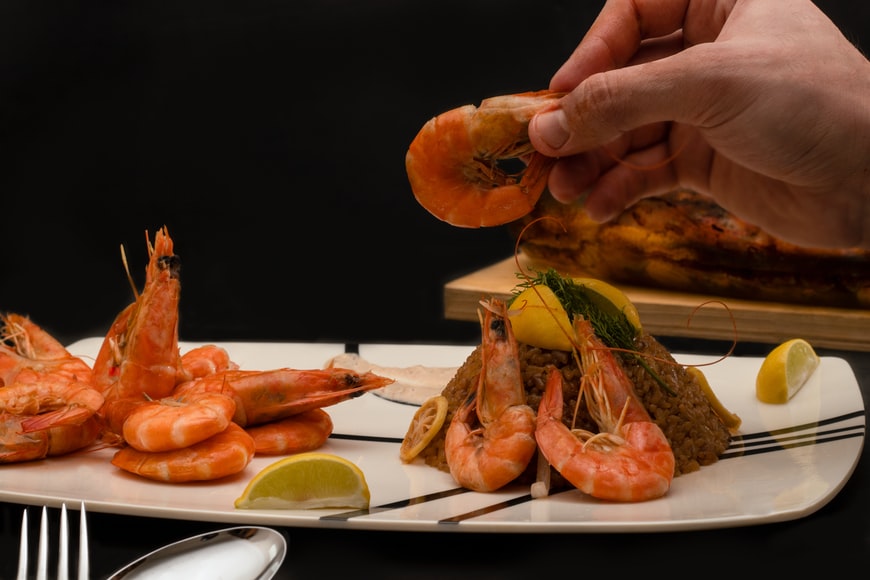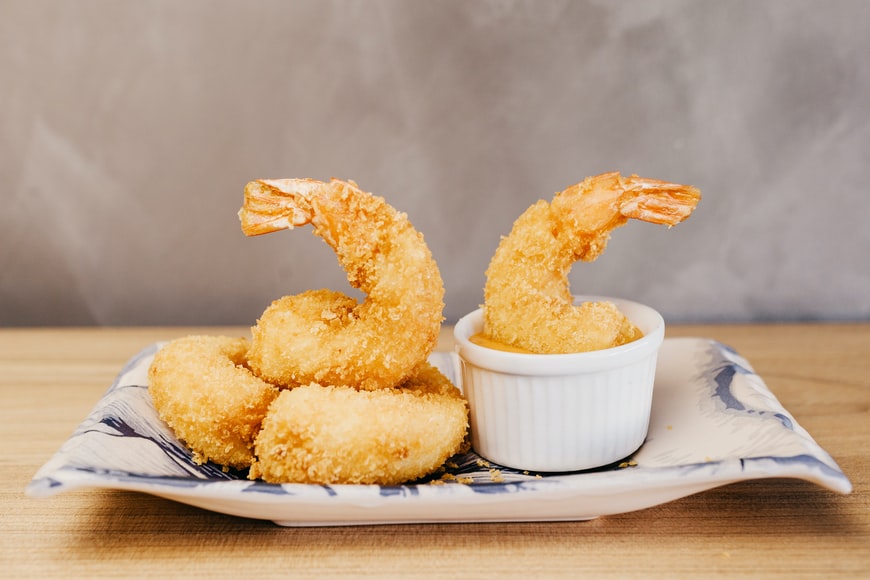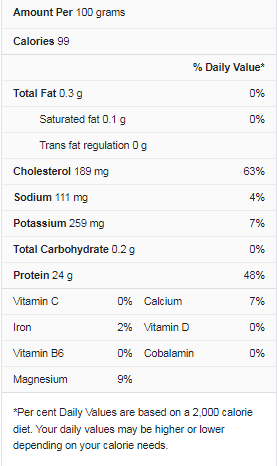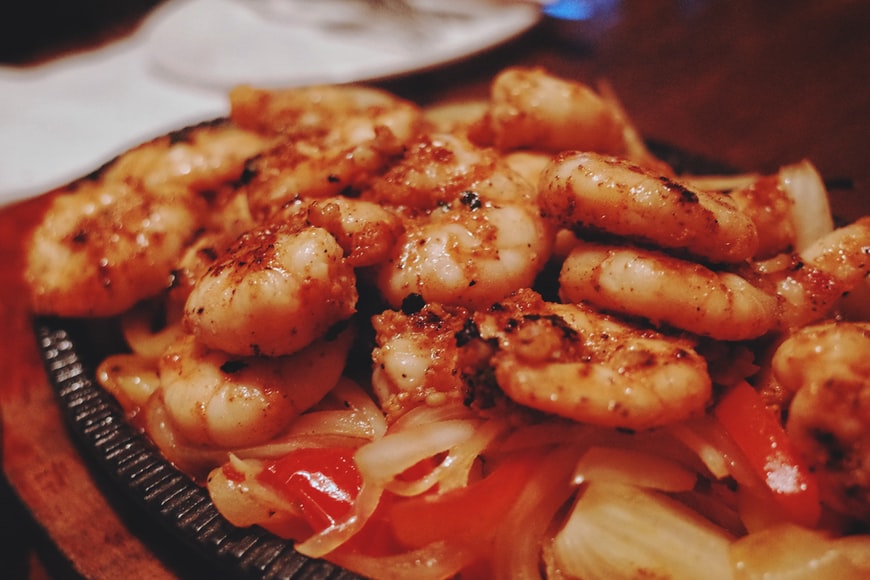If you are wondering how to tell if shrimp is bad? Before cooking shrimp, you need to check its appearance and smell. A bad-smelling shrimp may have a slimy texture or a sour smell. Regardless of color, it should be white, slightly transparent, or pink. If the shells are discolored, it’s probably spoiled, and the shrimp were likely treated with a bleaching chemical if the shells were brown. Moreover, a rancid shrimp may have an unpleasant flavor.
Fresh raw shrimp is whitish-gray and slightly translucent. A bad one will have black spots and a slimy texture. Besides, spoiled shrimp will have a slimy, moldy, or faded appearance. It will smell fishy and stick to your fingers, and you’ll have to throw it out. When you cook shrimp, you must keep it in the refrigerator to extend its shelf life.
Shrimp Nutrition Fact
Signs of Spoiled Shrimp
Food poisoning affects more than 76 million people each year, with rotten shellfish being one of the most common causes. Severe vomiting and diarrhea are common signs of food poisoning, and that’s hardly the best way to follow up on your seafood dinner. Shrimp is a type of shellfish used in various cuisines, and it’s essential to recognize the signs of damaged shrimp to keep yourself and others you cook healthy.
Spoiled Shrimp Smell
The most straightforward technique to determine whether or not the shrimp is still edible is to use your senses. Before you buy shrimp, could you give it a sniff? Because you can’t smell shrimp through plastic wrapping, buying fresh shrimp from a supermarket or a fisherman is safer.
Fresh shrimp should have little to no odor and a slight saline aroma, similar to seawater. If the shrimp smells like ammonia or otherwise appears to be “off,” don’t buy it. The ammonia or “off” odor is generated by bacteria growing in the rotting shrimp, which can cause food poisoning if consumed.
Shell Appearance
The bodies of fresh shrimp are solid and remain attached to the shell, and they should also have pearl-like shells that are clear and clean. The flesh has likely begun to degrade inside the shell if the bodies appear loose within the shell or if there are dark stains on the shell.
Make sure the shells are stiff and glossy as well. The shrimp is likely to be spoiled if the shells are cracked, slippery, or slimy and should not be purchased. Again, inspecting fresh, loose shrimp rather than prepared shrimp makes this easier to determine.
Shrimp Color
Ensure the shrimp don’t have any discoloration on their heads or shells. Raw shrimp should be white and somewhat transparent when purchased. If you’re purchasing cooked shrimp, make sure they’re pink. Sour shrimp have a discolored appearance, suggesting that the flesh has rotted.
Examine the shells for any signs of yellowing or dirt. This could indicate that the shells were bleached using a chemical like sodium bi-sulfate. It’s possible that the chemical was employed to hide the shrimp’s age.
Eye Appearance
Purchasing shrimp with their heads on can assist you in determining whether or not they are rotten. The eyes should be bright and gleaming. If they appear withered, dried out, or missing entirely, you should be concerned about the shrimp’s freshness. If you want to be safe, buy your shrimp somewhere else.
Frozen Shrimp Appearance
Freezer burns and thawing, and refreezing are problems with frozen shrimp. Frost or ice crystals on the shrimp or in the box can signal either of these problems. When shrimp are kept in the freezer for an extended period, it develops freezer burn, and tears in the bag can signal a problem.
Freezer-burned shrimp can usually be eaten. The flavor and texture will change if you keep the shrimp in the freezer for too long. The seafood should be safe to consume unless there is an odd smell or other indicators of ruined shrimp.
What is the Best Way to Freeze Shrimp?
If you have a lot of cooked or raw shrimp, the best way to store it is to freeze it. Shrimp can be kept in the refrigerator for two days without deteriorating. However, frozen shrimp retains flavor for six months. Once frozen, shrimp lasts months.
Freezing Shrimp That Has Been Cooked
Remove the meat from the shells of the shrimp. If you shell-cooked shrimp before freezing it, it would last longer. Remove the shells and tails with your hands, and if you didn’t remove the head while cooking, snap it off.
Cooked shrimp should not be left out on the counter for more than 2 hours. Put the shrimp in the fridge between breaks if you don’t have time to shell them all at once.
If you like, you can remove the vast vein running down the shrimp’s back, although it’s not necessary for freezing.
Cook the shrimp for around 10 minutes at a low temperature. Fill a pot halfway with water and bring it to a boil before adding your shrimp. Allow them to simmer for around 10 minutes to kill bacteria or shell fragments.
This is done after you’ve finished cooking the shrimp and are ready to freeze it, as boiling cooked shrimp kills hazardous bacteria.
Freeze cooked shrimp on a baking sheet. Place the shrimp on a baking sheet evenly. Please freeze them until brittle. Storing cooked shrimp separately prevents clumping.
Freeze shrimp for 1-2 days after boiling them to prevent spoilage.
Cookie sheets can be frozen and stored in smaller containers if you don’t have enough fridge space.
Prawns half-fill large freezer bags. After freezing, transfer the shrimp to sealable bags. Close the bags and press out as much air as possible before freezing.
Date the bags before freezing. Thus, you’ll know their expiration date.
Freeze shrimp for three months. Frozen shrimp lasts six months. Use the shrimp within three months.
If frozen, shrimp will not spoil.
What is the Color of Rotten Shrimp?
Raw shrimp should be white and somewhat transparent when purchased. If you’re purchasing cooked shrimp, make sure they’re pink. Sour shrimp have a discolored appearance, suggesting that the flesh has rotted. Examine the shells for any signs of yellowing or dirt.
The most effective method is to smell and examine the shrimp: A sour odor, poor color, and slimy texture are all symptoms of rotten shrimp; discard any shrimp with an off odor or appearance.
Conclusion
To check if cooked shrimp is terrible, you can check for signs of badness. If it is slimy, has a foul smell, or looks off. It should be refrigerated and kept away for up to a week to keep it from spoiling. You can also inspect the shells to see if they’re intact and healthy. In most cases, the shells of sour shrimp will have a foul odor.
A bad-smelling shrimp will have a fishy or ammonia aroma and a pale, matte-looking texture. A bad-smelling shrimp will be slimy and faded in color. It is best to discard it if you suspect it’s spoiled, and it’s essential to avoid the risk of catching food poisoning to enjoy a delicious meal. If you’re unsure how to tell if cooked shrimp is terrible, check its color and smell.






